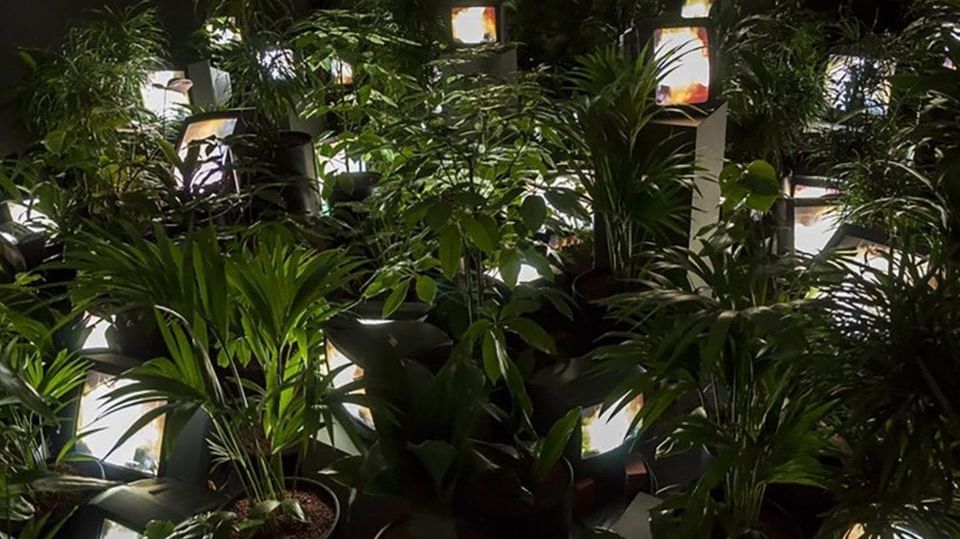
From Nam June Paik’s new technologies to affective photography from Dawoud Bey,
this week’s online articles explore themes of communication, connection and mass media.
this week’s online articles explore themes of communication, connection and mass media.
 | Media Pioneer
Korean-born artist Nam June Paik originated the phrase "electronic superhighway" in 1974. He predicted the future of communication in the information era, using emerging technologies such as TV and video.
Image: Nam June Paik, TV Garden 1974-1977 (2002), Installation view (detail). Courtesy Kunstsammlung Nordrhein-Westfalen, Dusseldorf. © Estate of Nam June Paik. Image: © Tate.> Read more
|
Media Pioneer
Korean-born, transnational artist Nam June Paik (1932-2006) originated the phrase ‘electronic superhighway’ in 1974. He predicted the future of communication in the information era, using emerging technologies to explore the rise of mass media. A pioneer of video and television installation, Paik stacked TV sets, constructed robots and made global broadcasts – offering a radical reimagining of what art could be. A new exhibition at Tate Modern, London, presents over 200 works and opens at a time when screens are everywhere: on billboards, in our living rooms, in offices and in our pockets.
Titled The Future Is Now, the show opens with TV Garden (1974/2002). Dozens of screens nestle within an array of greenery, displaying shifting images amongst lush foliage. The work visualises diminishing distinctions between nature and technology, as the monitors appear to grow, eerily, from within a synthesised garden. Valentina Ravagliam, Assistant Curator at Tate, explains what can be seen on each TV: “The flickering screens play Paik’s seminal video Global Groove (1973), a frenetically edited montage that brings together traditional Korean dancers, Japanese commercials, Richard Nixon’s distorted face with performances by avant garde artists and frequent collaborators of Paik’s such as John Cage, Merce Cunningham and Charlotte Moorman.”
These are not only the voices to be heard. Paik’s ground-breaking satellite videos were broadcast throughout the 1980s, featuring the likes of Peter Gabriel, Laurie Anderson, David Bowie and Lou Reed. A full room is dedicated to these pieces, evoking the era’s defining “MTV aesthetic.” Other highlights include a recreation of the renowned Sistine Chapel (1993), which was awarded the Golden Lion for the German pavilion at the Venice Biennale over 25 years ago. It comprised over 40 projectors, offering a technological response to Michelangelo’s historic frescos. Overlapping images of cultural pioneers illuminate the space, creating a mesmerising and kaleidoscopic environment that reflects the icons of the time.
The exhibition runs from 17 October – 9 February. Find out more here.
Lead image: Nam June Paik, TV Garden, 1974-7 (2002) Kunstsammlung Nordrhein-Westfalen (Düsseldorf, Germany) © Estate of Nam June Paik Photo: Tate (Roger Sinek).
| |

No comments:
Post a Comment